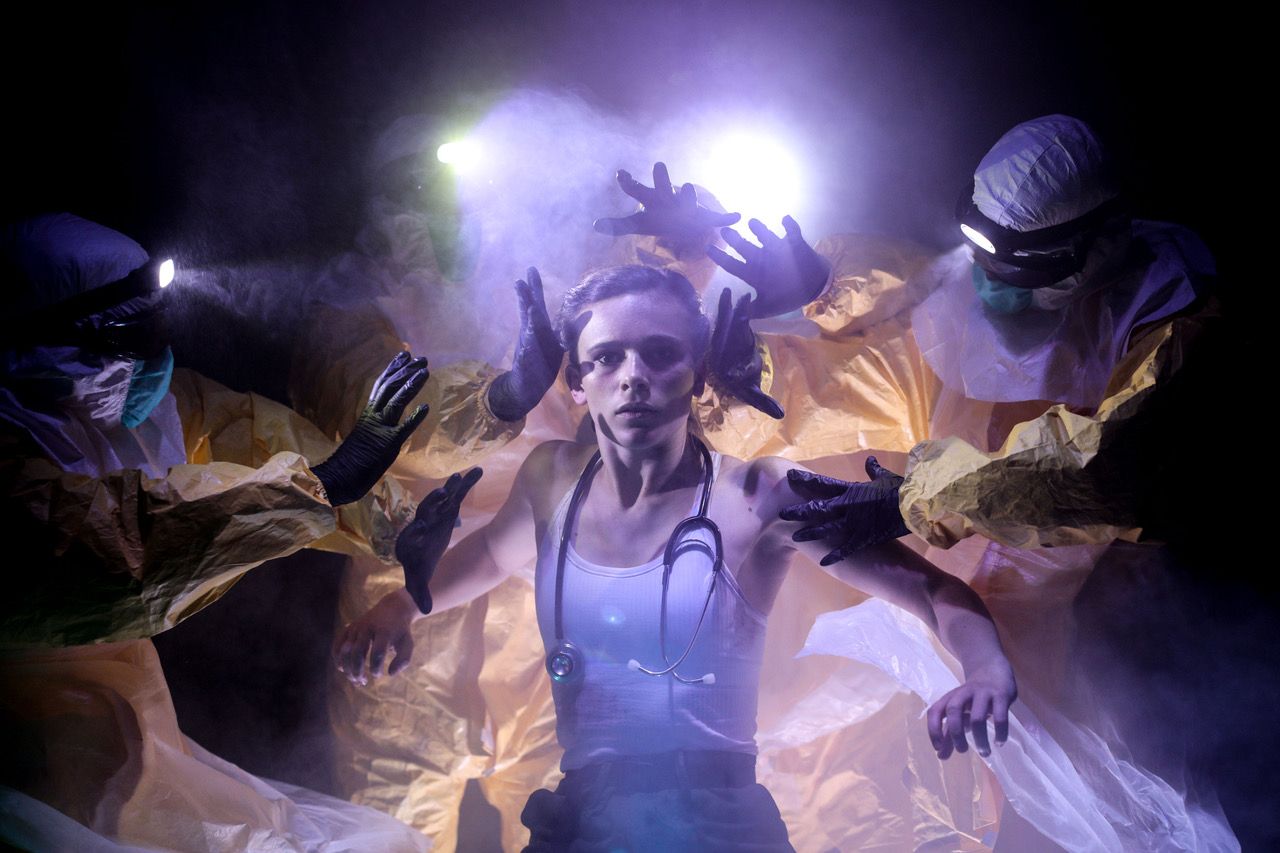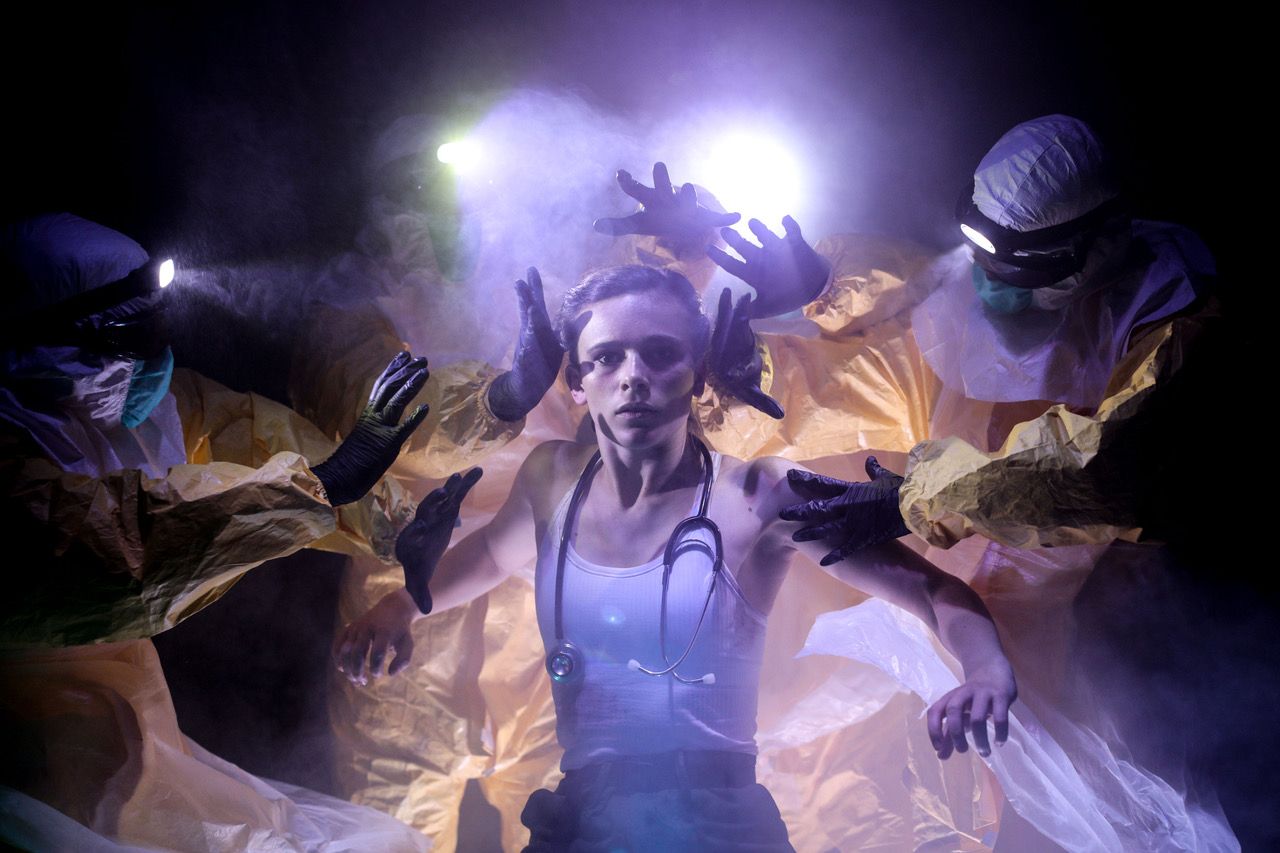By Serafina Lee, Arts Deputy Digital Editor
A sensory overload of physical storytelling, Temper Theatre brings us a theatrical experience like no other with Nightshifter. Asking questions about modern technology and the limits of our empathy, the production is an experiential spectacle.
A synesthetic spectacle of physical theatre, Nightshifter cannot be judged by traditional theatrical standards. More of a contemporary dance or a piece of performance art than a play, the storytelling is visceral, physical and charged with intensity. The only thread of consistent narrative follows an overworked young junior doctor on her night shift as she encounters highly abstracted scenes of humanitarian crises and surreally nightmarish figures. She is eventually forced to locate her priorities and try to make sense of the world around her.

The audience is immediately dragged into an onslaught of striking visuals, reverberating echoing sound and strobe lighting. We are left to wonder as each spectacle is unveiled, a cyclical structure that consistently tears the young junior doctor away from the direly vapid hospital set into more expansively distorted terrors. We can interpret these metamorphic spectacles as a representation of her psychological fatigue and internal battling, or a socio-political critique of our modern sympathetic incapacities to crises. It is, however, redundant to attempt to amalgamate these separate physical scenes into one coherent narrative. There are elements of the recognisable, such as looming figures in hazard masks, collapsing people in life jackets and a lone man fixated on a glowing green screen - assumed to be a phone - but they serve more as instantaneous sensationalism, evoking emotional responses as opposed to coherent linear storytelling.
The main evocative device and real strength of the production was the lighting. Hazy purple light diffused through the smoke as figures were concealed and revealed and the strobe lighting accentuated the unnaturally contorted movements. Most striking was the vivid green light of the phone that excellently lit up the face of a lone man in the midst of total darkness, really establishing the privacy of his internal world. The figures in hazard masks were particularly unnerving, each with a singular green light on their suit pointing towards the audience; our relationship to the performers was cleverly inverted; they could see us but we couldn’t see them.
The sound effects echoed throughout the performance, news excerpts functioning as an almost apocalyptic warning. The tapping of phone typing was amplified to a distorted oppressiveness, morphing into a heart or drum beat, exemplifying the consumption of technology and its controlling capacity. Temper Theatre describes how Nightshifter was inspired by ‘hours of conversation with junior doctors, nurses and paramedics’, the background noises of the hospital location were very successfully used, snippets of formal conversations and beeping machinery really built upon the junior doctor’s increasing stress and paranoia. However, as sound was constantly loudly layered, with explosions heaped upon explosions, the production would have really benefitted from using silence as another technique of tension. I found myself craving the brief intermissions that lacked the grandiose sounds of warfare.

One coherent theme throughout the production was the captivating power of modern technology. On the whole, it was depicted very negatively, the phone screens operated as a type of black hole, completely engulfing the viewer in their grasp. When one man struggled to find the power to turn away from the orb of green light, the junior doctor physically wrestled with him to remove it. However, once she had taken it from him and looked into it, she too was entirely engulfed. As she swiped and gaped, other characters were thrown about the stage and the amplified typing blared. Modern technology therefore renders the individual unable to fully sympathise with others, as they are constantly bombarded with a catalogue of human suffering. How then do we focus our attention, and can we ever truly sympathise with suffering whilst observing it from one side of a phone screen? These are the sorts of questions Nightshifter raised, the physical theatre operating as predominantly ambiguous but also laced with potential meaning.
Nightshifter is a theatrical experience like no other. With literally no dialogue and relying on the power of visuals and physical storytelling, it manages to deliver a sensory overload that will leave you to unravel the meaning alone.
★★★★
Featured: Temper Theatre /
James Davidson, Harry Villiers
Will you be heading over to the 1532 Performing Arts Centre?









